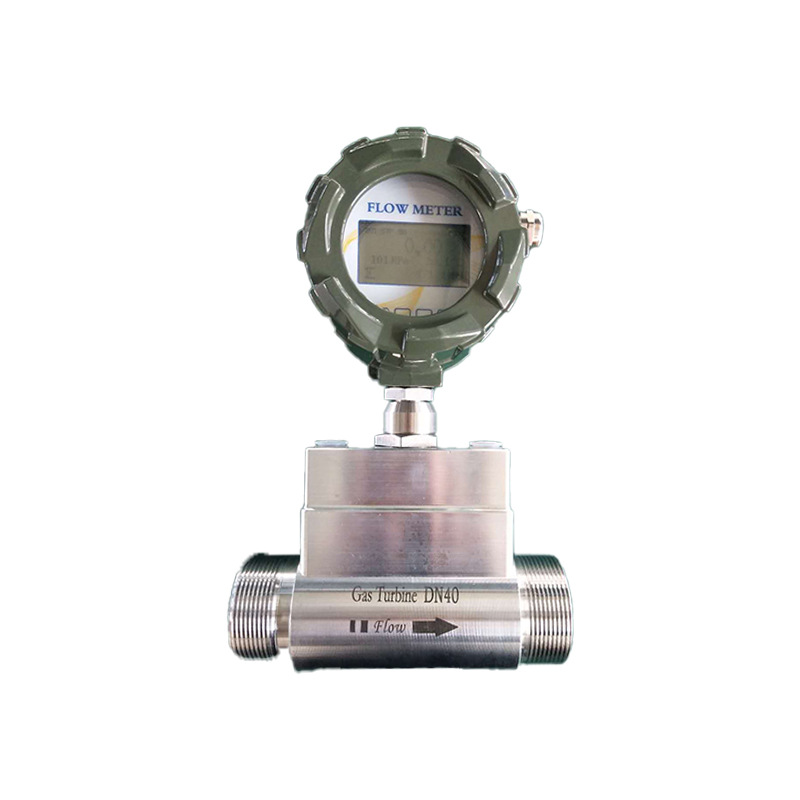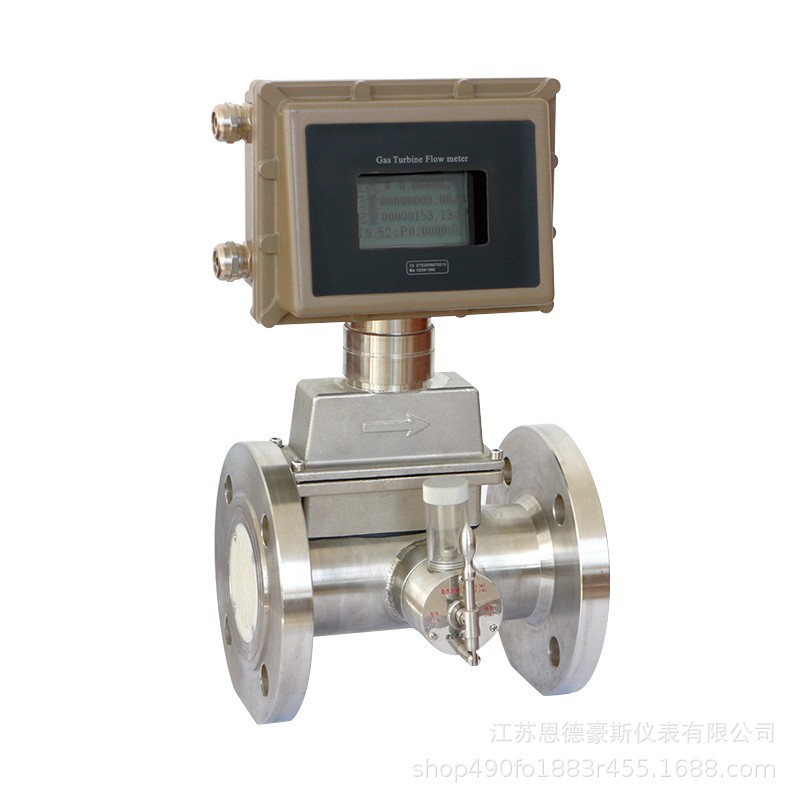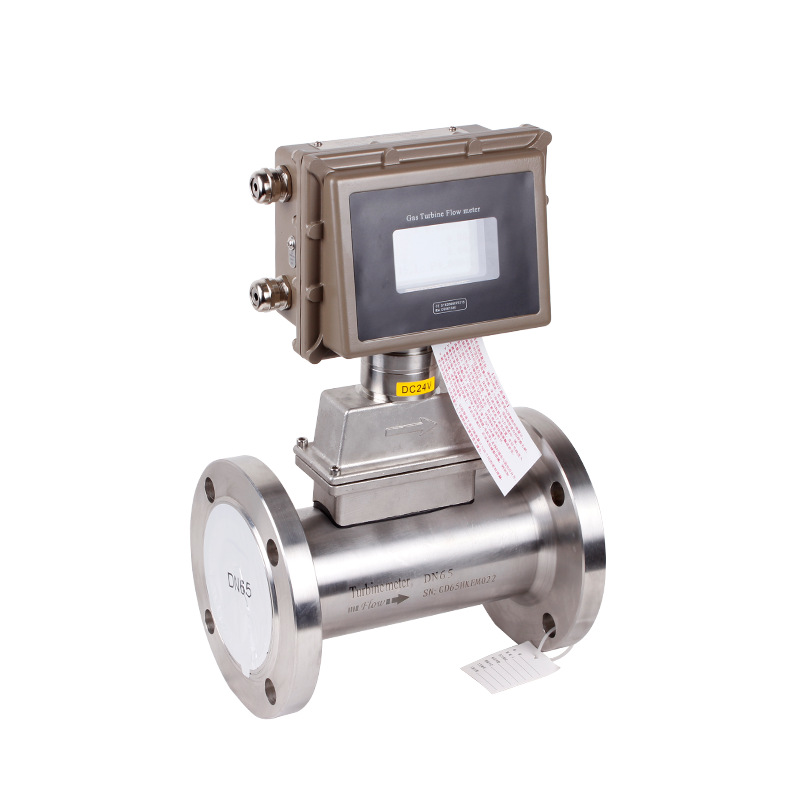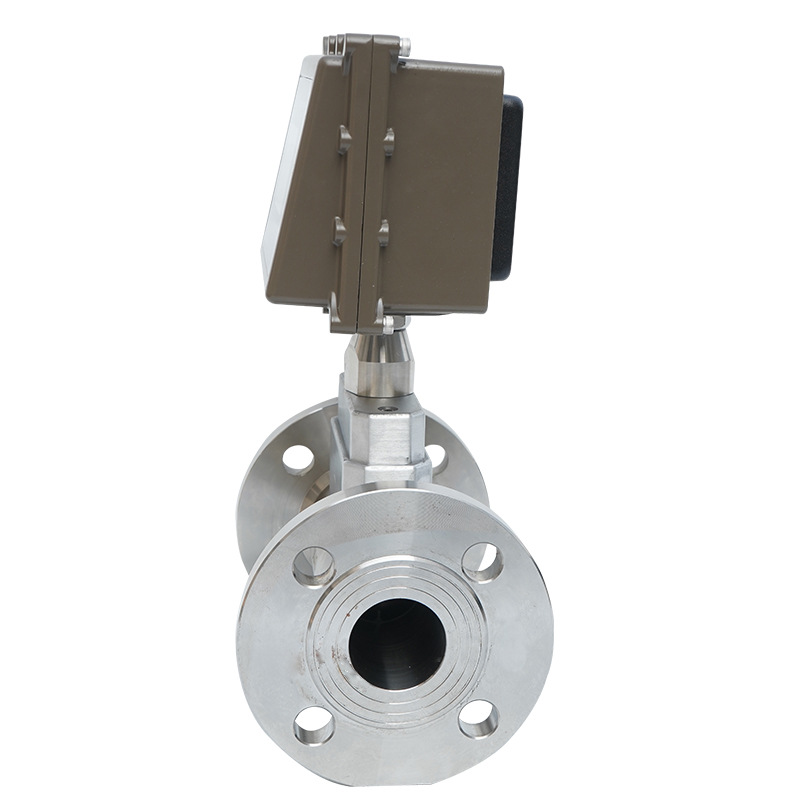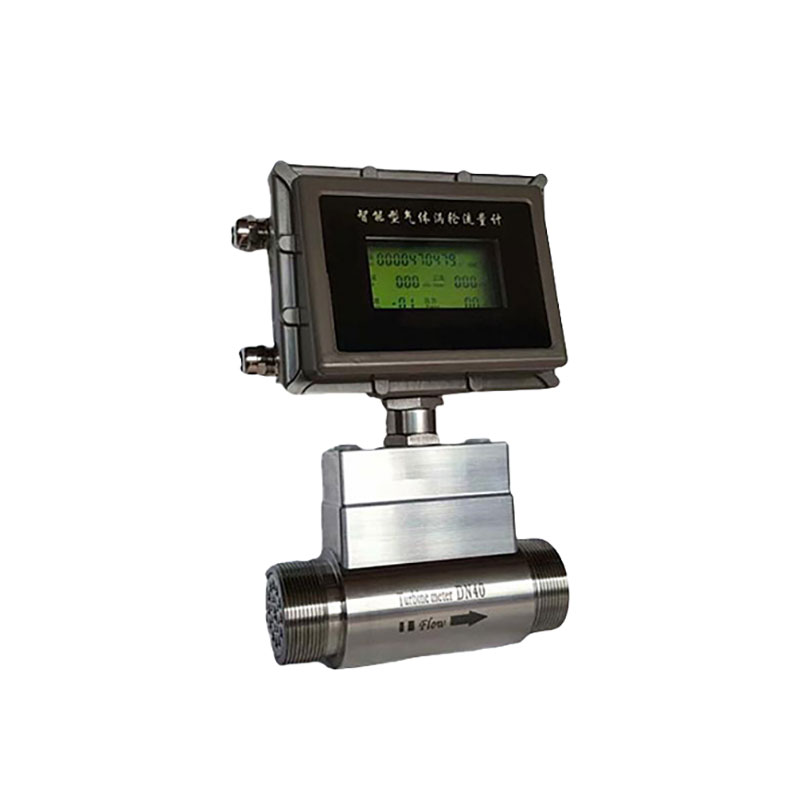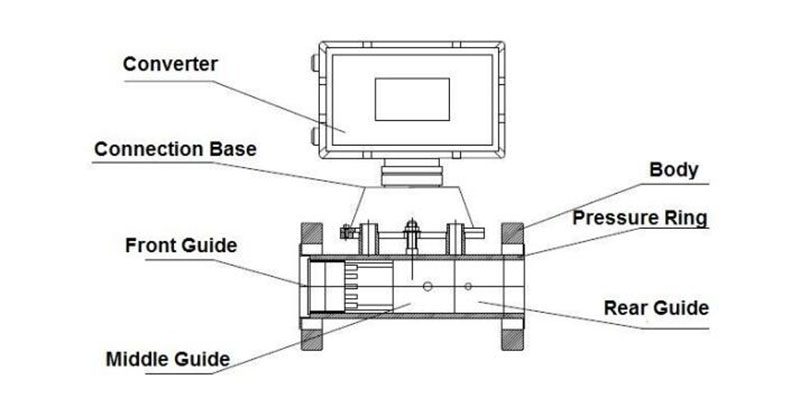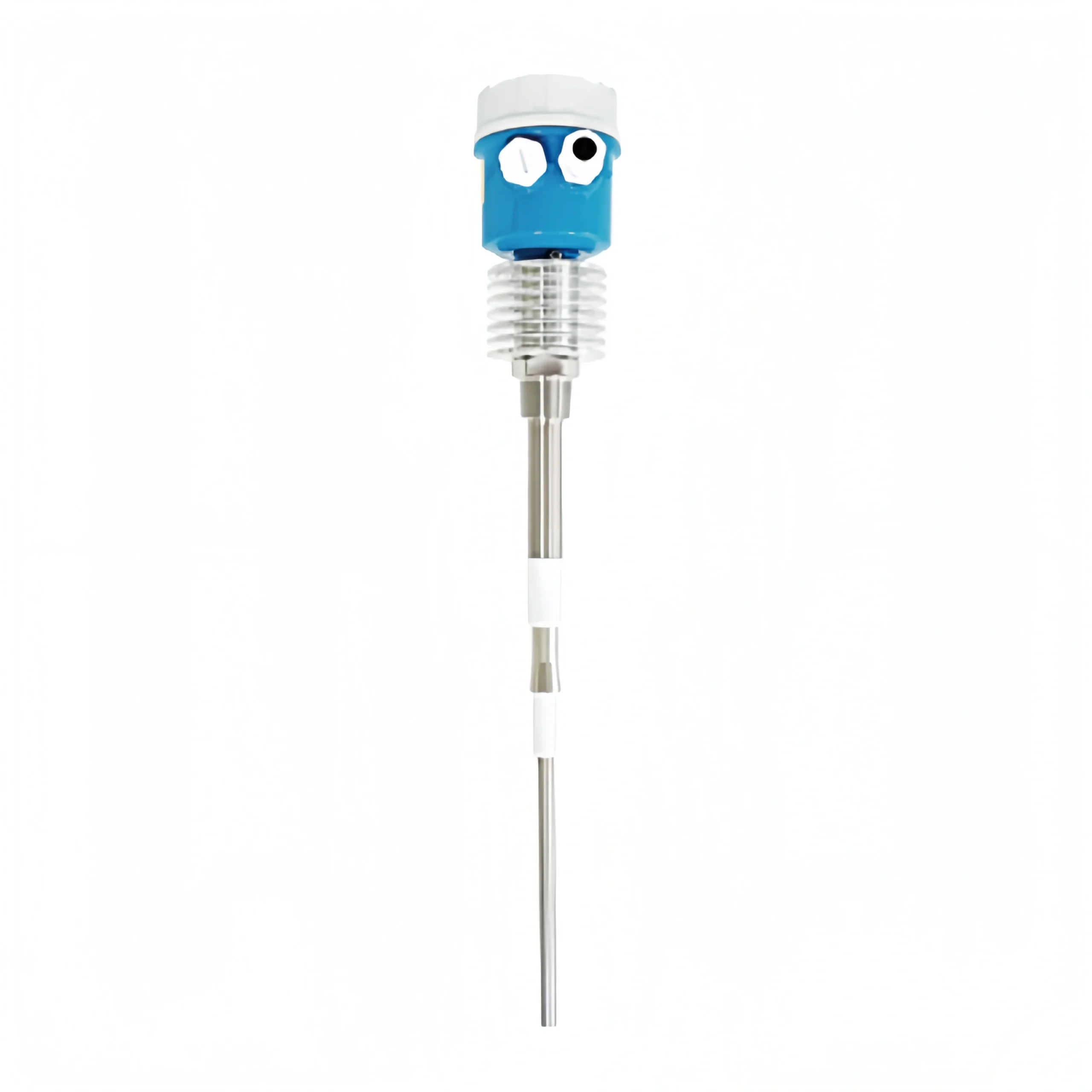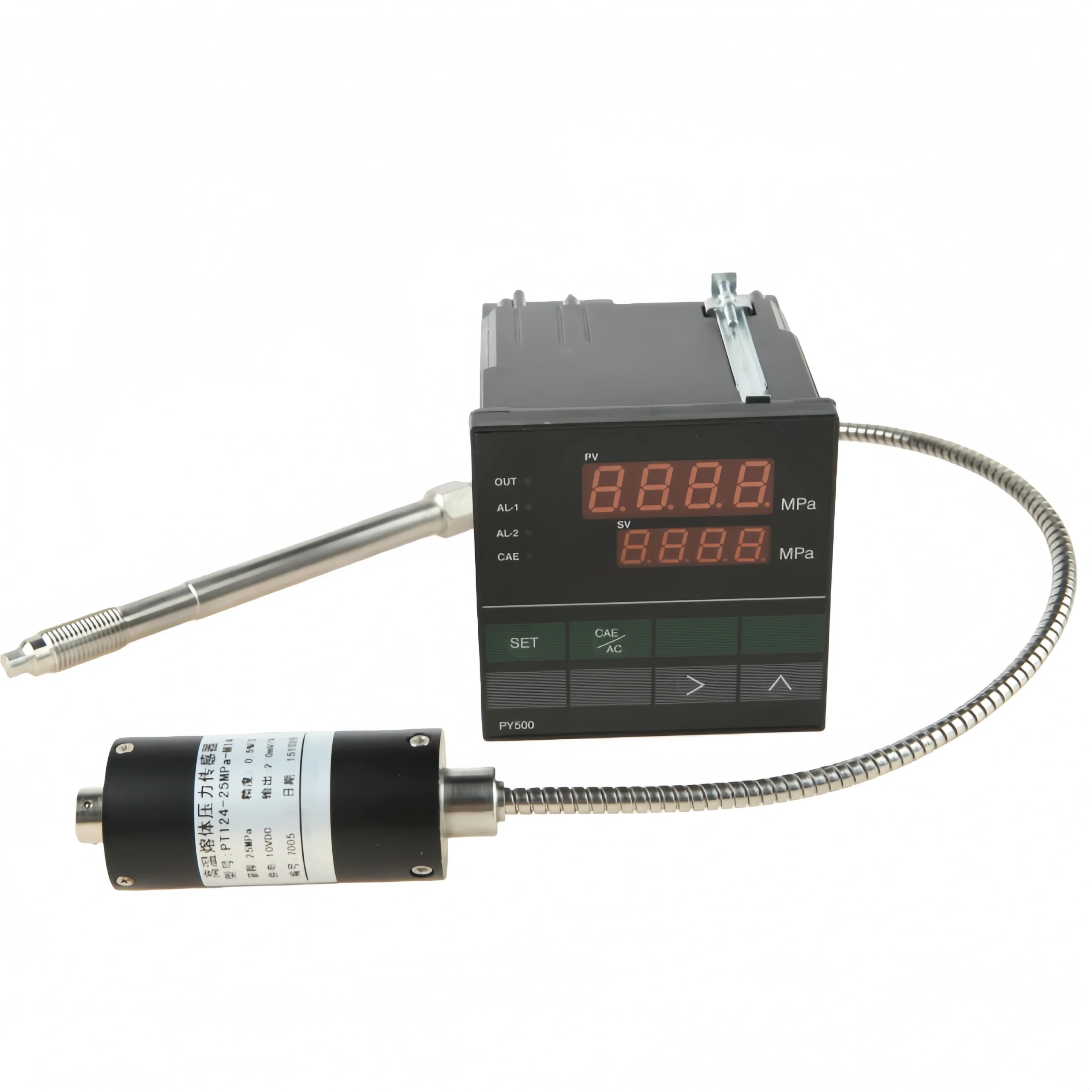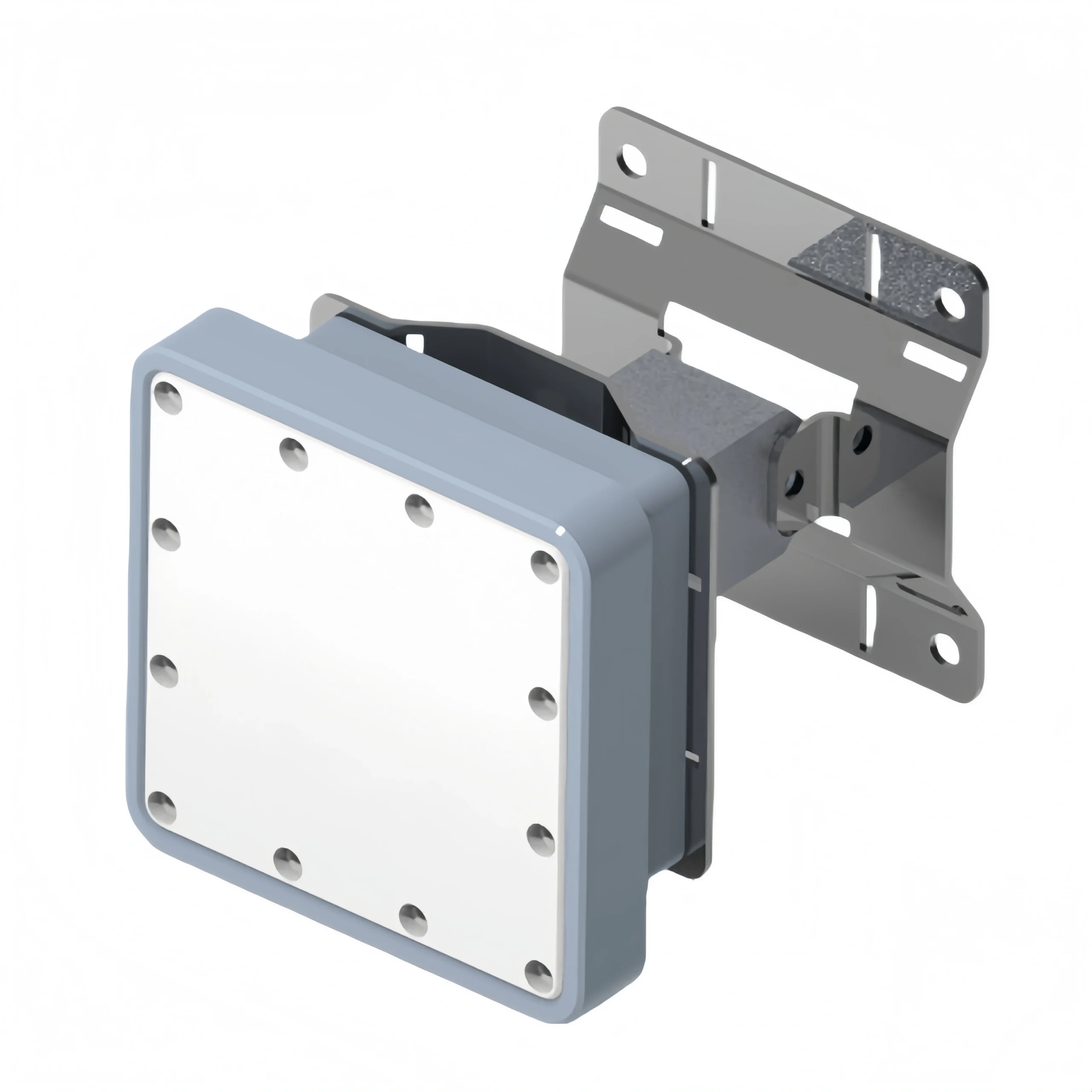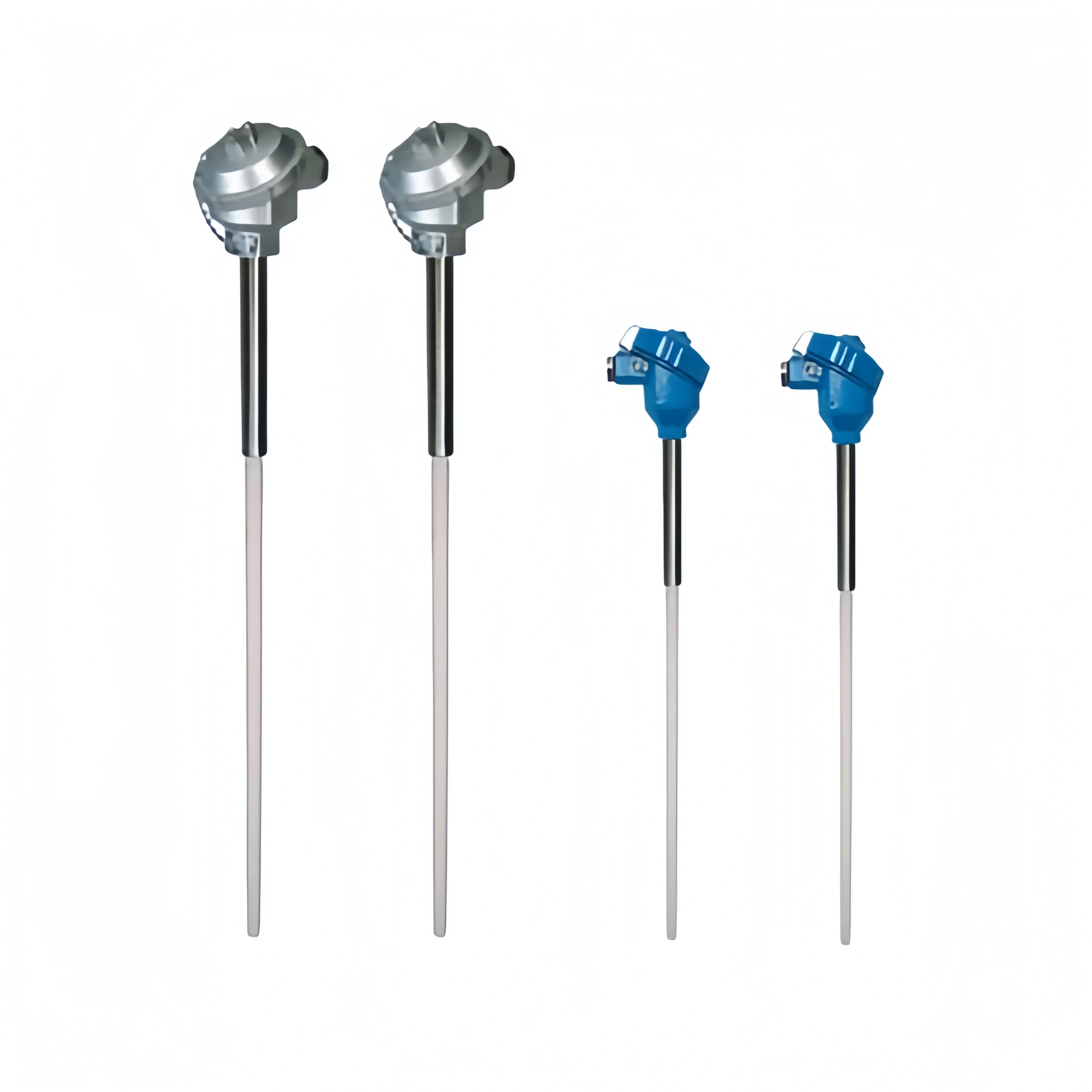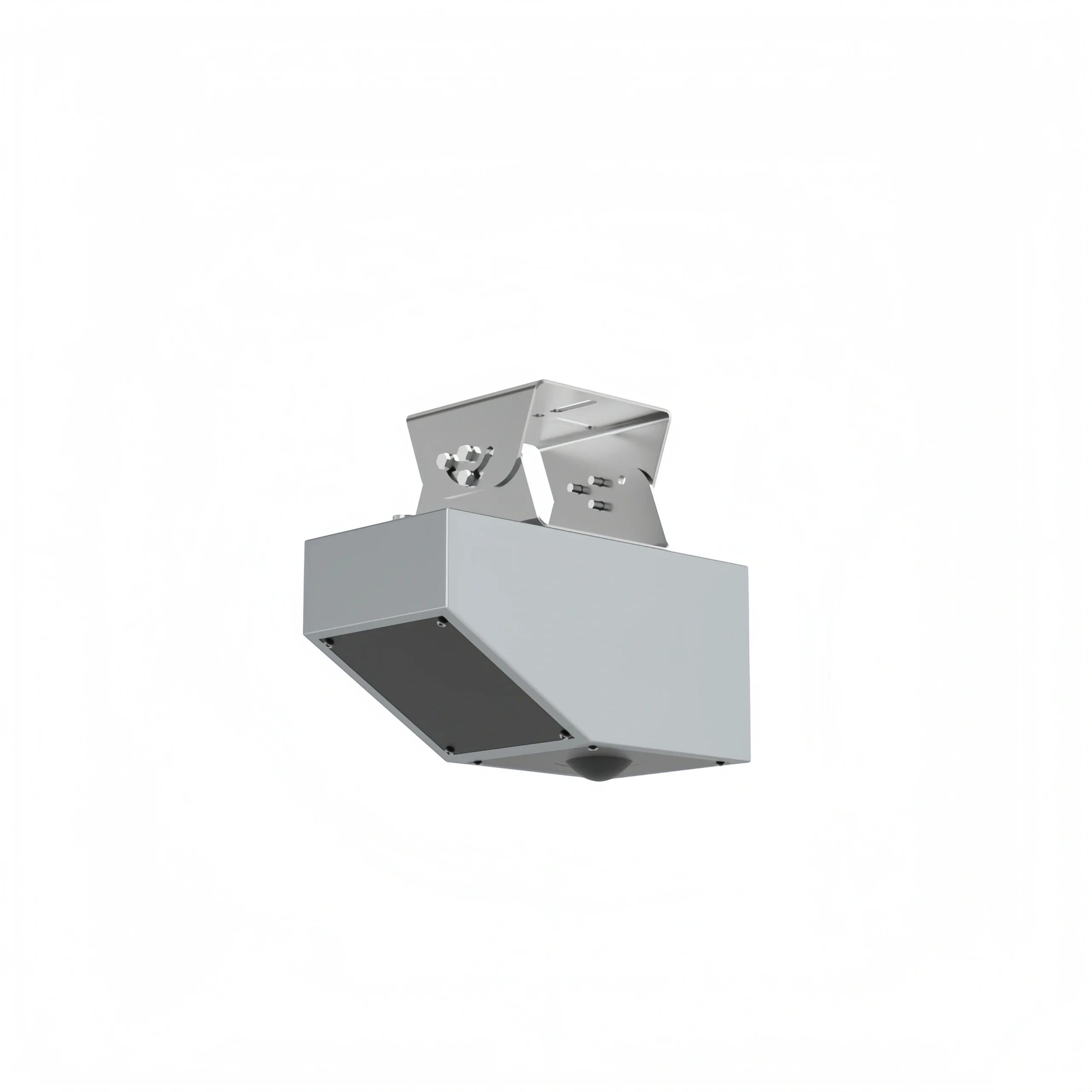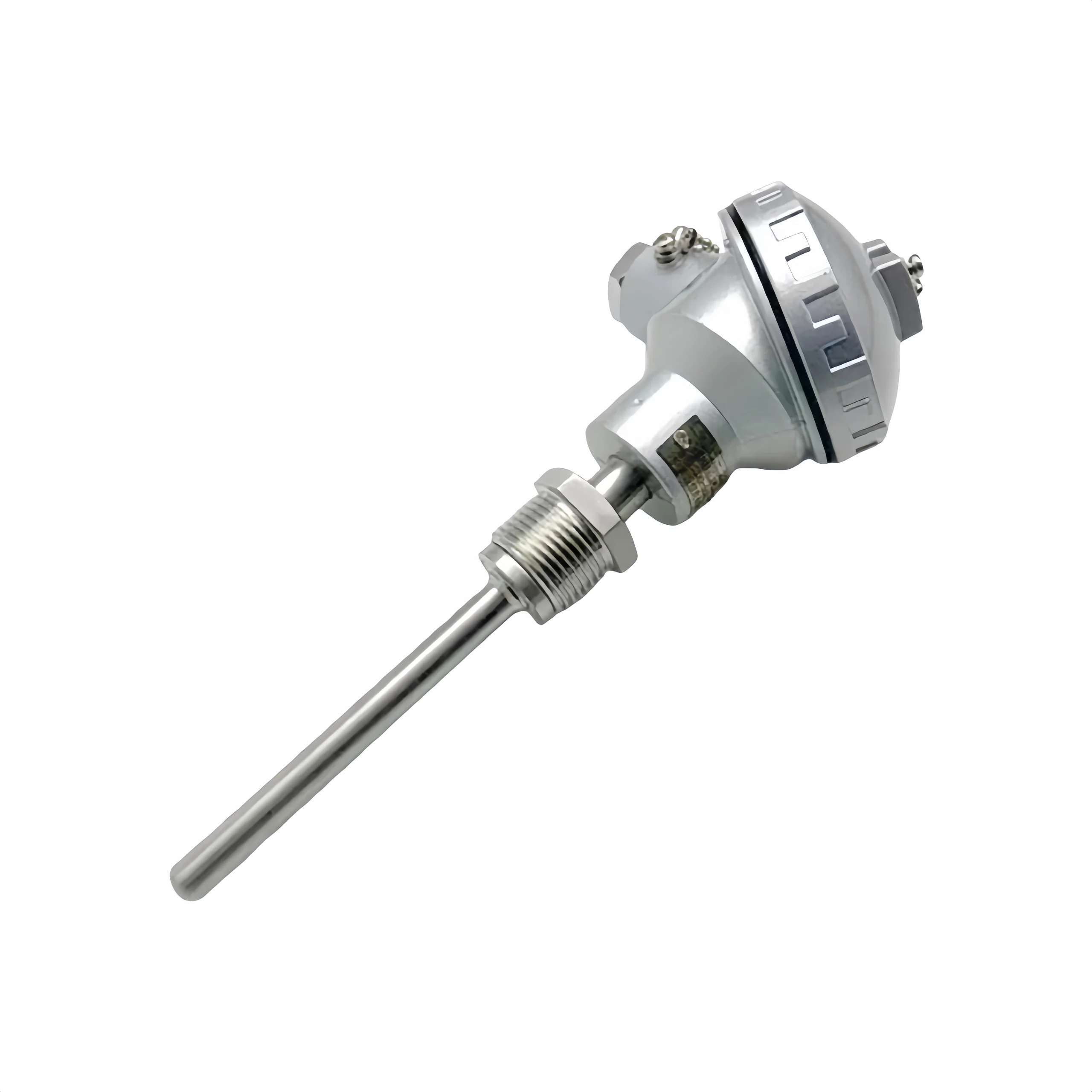Gas Turbine Flow Meter Working Principle
When the airflow enters the flowmeter, it first passes through the leading structure of the independent movement and accelerates. Under the action of the fluid, since the turbine blades are at a certain angle with the flow direction of the fluid, the turbine generates a rotational torque. After the turbine overcomes the resistance torque and frictional torque, it starts Turn.
When the resistance torque reaches balance, the rotation speed is stable, and the turbine rotation speed has a linear relationship with the flow rate. The sensor reluctance is periodically changed by a rotating magnet on the transmitter disk. As a result, a pulse signal with a frequency proportional to the fluid volume flow is induced at both ends of the sensor.
After the signal is amplified and shaped by the preamplifier, the pressure and temperature signals detected by the pressure and temperature sensor are simultaneously transmitted to the flow totalizer for processing. Directly displays the standard volume flow rate and standard volume total.
The flow totalizer consists of temperature and pressure detection analog channels, flow sensor channels and microprocessing units, and is equipped with various output modules.
The microprocessor in the flow meter performs temperature and pressure compensation according to the gas equation and automatically corrects the compression factor. The gas equation is as follows:
Qn = Zn/Zg(Pg + Pa)/P n・Tn/Tg・Qg
In the formula:
Qn —Volume flow in standard state(m³/h)
Qg —Uncorrected volume flow(m³/h)
Pg —Gauge pressure at the pressure detection point of the flowmeter (KPa)
Pa —Local atmospheric pressure (KPa )
Tg —Absolute temperature of the medium (273.15 + t) k
t —Temperature of the measured medium (°C)
Zn—Compression coefficient in standard conditions
Zg —Coefficients for operating conditions
Tn—Absolute temperature in standard conditions(293.15k)
Pn—Standard atmospheric pressure (101.325KPa)
Note: For natural gas Zn/Zg=(Fz)2, Fz is called the super-compression factor and is calculated according to the formula in China National Petroleum Corporation’s standard SY/T6143-1996.
Why Choose Gas Turbine Flowmeter to Measure Natural Gas?
The gas turbine flowmeter bearings are well made and the guide vanes are specially designed. It can reduce wear and ensure measurement reliability under extreme conditions.
Its output signal is pulse and easy to digitize.
The instrument coefficient and linearity of gas turbine flowmeters are less affected by pressure changes. If matched with a secondary instrument with special functions, it can also perform quantitative control, over-quantity alarm, etc. Therefore, it has been widely used in the fields of petroleum, liquefied gas and natural gas.
What Gases Can the Gas Turbine Flowmeter Measure?
The gas turbine flowmeter can measure natural gas, air, nitrogen, propane, acetylene and other gases, but it cannot be used to measure oxygen, hydrogen, biogas and other gases.
why? This is about its structure and working principle.
As the name suggests, the important components in the gas turbine structure are the bearings and impeller. When the gas flows through the instrument, it will push the impeller to rotate. The speed of the impeller rotation is proportional to the flow rate of the gas. After signal processing and calculation, the gas flow rate can be obtained.
Since the impeller is a movable part, it constantly rubs against the gas during rotation. Oxygen, hydrogen, and biogas are all flammable gases, so it is not recommended to use a gas turbine flowmeter to measure them.

